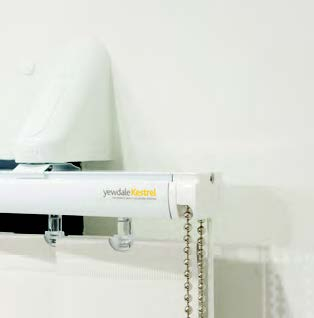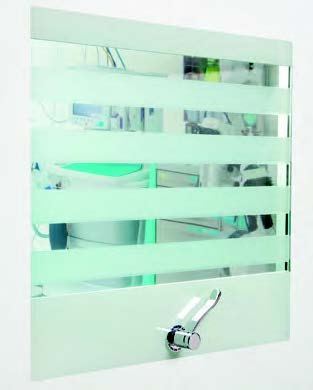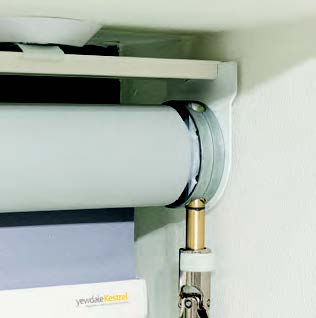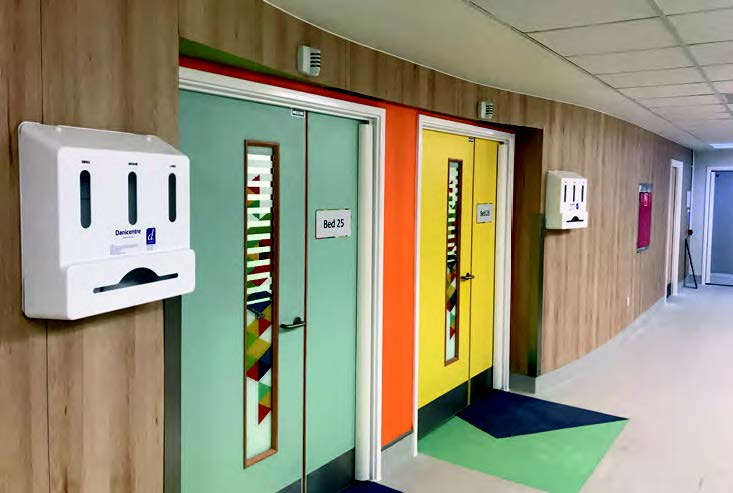
How the very-latest blinds are helping to enhance mental health environments at the same time as protecting patients.
It is now more widely accepted that the environments in which mental health services are delivered must be designed to be less institutional and more homely than traditional psychiatric facilities. And fixtures and fittings can play a major role.
Window and door coverings are an important addition to a building, in particular in inpatient areas.
Benefits of window treatments
Greg Myatt of manufacturer Yewdale, explains: “Window treatments such as blinds and curtains in a mental health setting can greatly help to relieve the feeling that a patient is far from home in a different environment, relieving anxiety and improving focus.
“But often small items like this, are removed because of ligature risks or to improve observation, making the room seem sterile and unwelcoming.”
Shading and privacy
Gerard Baxter of Workspace adds: “Window coverings help with light and glare control and on long summer days occupants may want to sleep for longer than it is dark.
“Secondly it’s about privacy, another important factor given that many mental health buildings have occupied gardens facing bedrooms.”
NHS guidance
Health Building Note (HBN) 03-01 Adult acute mental health units states that, “Where blinds are fitted in service user areas, they should be anti-ligature, integral to the window structure, and controllable by the service user.
“The mountings or tracking of curtains should not provide a ligature opportunity. They should not be removable to cause harm.”
Product design innovation
Roller blinds
Yewdale is one of a number of manufacturers to respond to these guidelines with a dedicated range of anti-ligature roller blinds.
Myatt said: “An anti-ligature blind provides a small amount of control over a situation when otherwise someone may feel all choices are made for them. Deciding whether to open or close a blind to let in daylight is put in the hands of the person in the room, indicating a level of trust, but also reassurance that they are safe at the same time.”
To combat the risks of self harm, or the blind and fittings being used as a weapon, YewdaleKestrel is a magnet-based solution, which comes away when loaded, preventing it being used as a ligature point.
Choice of fabric is also important. Baxter said, “Fabrics need to be tear-proof and have the right light control properties. Fabric suppliers are also being much more innovative with their products.”
Motorised anti-ligature roller blinds are being increasingly specified, offering patients added control.
Baxter said, “It’s important that blinds are robust and easy but safe to operate. “We are seeing an increase in ‘smart’ motorised systems as the prices are becoming more competitive and the integration with building management for both lighting and solar control.”

Anti-ligature is a must

Integrated glass blinds

Motorised blinds are an option

Integral blinds
While anti-ligature roller blinds remain a popular choice in mental health settings, integral blinds are also becoming increasingly popular.
BetweenGlassBlinds has seen its magnetic and motorised blinds installed in psychiatric units up and down the country.
Director, Mark Nash, said: “Blinds and curtains fitted to the outside of the glass can be vandalised and misused in a mental health setting, proving to be an easy target for disruptive patients.
“Integral blinds allow staff to observe patients discreetly without putting staff at risk in any way. They also maintain the privacy and dignity of patients and are controllable, so give patients an element of choice over their environment.”
Ease of maintenance is a key design priority with the units designed to be hermetically sealed, preventing build-up of bacteria and making them extremely durable.
Colour counts
Recently, more and more thought has been put into incorporating colour, artwork and general design to help the blinds blend into the surroundings, looking less institutional – without compromising the durability and observation function which staff rely on day to day.
In the future, Nash predicts being able to enhance products through the use of colour and bespoke printing will become increasingly popular.
And BetweenGlassBlinds and sister company, Vistamatic, are also developing a new range of switchable glass products to be launched later this year, specifically with the mental health sector in mind.